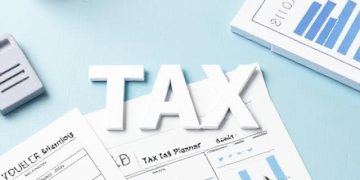Financial freedom is a goal that many aspire to achieve, but few actually reach. It requires discipline, perseverance, and a solid plan in place to help you reach your financial goals. One of the key components of achieving financial freedom is budgeting effectively. In this article, we will outline a roadmap to financial freedom through proper budgeting techniques. By following these steps, you can take control of your finances and work towards a brighter financial future.
Understanding the Importance of Budgeting
Before we delve into the roadmap to financial freedom, it’s important to understand why budgeting is essential. Budgeting allows you to track your income and expenses, identify areas where you can cut back, and set financial goals. Without a budget, it’s easy to overspend, accumulate debt, and struggle to make ends meet. By creating a budget and sticking to it, you can take control of your finances and work towards achieving your financial goals.
Step 1: Assess Your Current Financial Situation
The first step in achieving financial freedom through budgeting is to assess your current financial situation. Take a look at your income, expenses, debts, and savings. Determine where your money is going each month and identify areas where you can cut back. This will give you a clear picture of your financial health and help you set realistic financial goals.
Step 2: Set Financial Goals
Once you have assessed your current financial situation, it’s time to set financial goals. These goals could include paying off debt, saving for a big purchase, or investing for retirement. Make sure your goals are specific, measurable, attainable, relevant, and time-bound (SMART). By setting clear financial goals, you can stay motivated and focused on achieving financial freedom.
Step 3: Create a Budget

With your financial goals in mind, create a budget that outlines your income, expenses, and savings goals. Make sure to allocate a portion of your income towards essential expenses such as rent, utilities, and groceries, as well as savings and debt payments. Track your spending each month and adjust your budget as needed to stay on track towards achieving your financial goals.
Step 4: Cut Back on Expenses
To achieve financial freedom, you may need to make some sacrifices and cut back on expenses. Look for areas where you can reduce spending, such as dining out less frequently, canceling subscription services you don’t use, or buying generic brands instead of name brands. By trimming your expenses, you can free up more money to put towards your financial goals.
Step 5: Increase Your Income

If cutting back on expenses isn’t enough to reach your financial goals, consider ways to increase your income. This could involve taking on a side hustle, asking for a raise at work, or selling items you no longer need. By boosting your income, you can accelerate your progress towards financial freedom and achieve your budgeting goals faster.
Step 6: Build an Emergency Fund
As you work towards achieving financial freedom, it’s important to build an emergency fund to cover unexpected expenses. Aim to save at least three to six months’ worth of living expenses in a high-yield savings account. This will provide you with a financial safety net and peace of mind in case of job loss, medical emergencies, or other unforeseen circumstances.
Step 7: Invest for the Future
Once you have built an emergency fund and paid off high-interest debt, consider investing for the future. This could involve contributing to a retirement account, such as a 401(k) or IRA, or investing in stocks, bonds, or real estate. By investing wisely, you can grow your wealth over time and secure your financial future.
Step 8: Review and Adjust Your Budget Regularly
Finally, to maintain financial freedom, it’s important to review and adjust your budget regularly. Keep track of your income and expenses, monitor your progress towards your financial goals, and make adjustments as needed. By staying proactive and mindful of your finances, you can continue to work towards achieving your budgeting goals and enjoy a secure financial future.
To Wrap Up
Financial freedom is within reach for those who are willing to put in the effort and discipline to achieve it. By following this roadmap to financial freedom through proper budgeting techniques, you can take control of your finances, set realistic financial goals, and work towards a brighter financial future. Remember to assess your current financial situation, set financial goals, create a budget, cut back on expenses, increase your income, build an emergency fund, invest for the future, and review and adjust your budget regularly. With dedication and perseverance, you can achieve financial freedom and enjoy a life free from financial stress.

















































